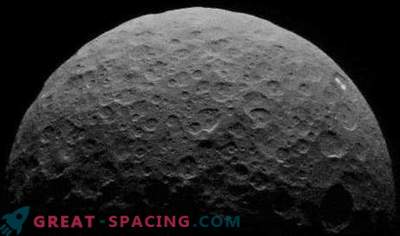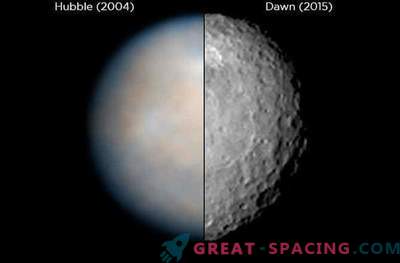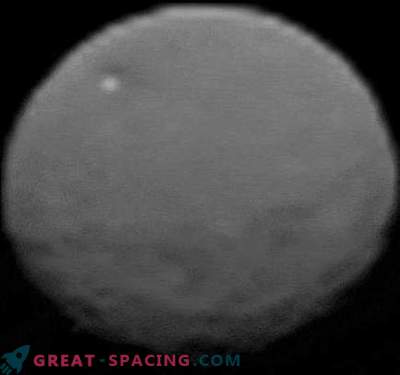
After spending eight months above the dwarf planet Ceres, NASA's Dawn spacecraft is about to get the most detailed images of the surface. What the hell are these bright spots? What processes form this airless surface? Scientists got a better understanding of these processes as the spacecraft descends from an orbit of 915 miles (1,470 km) to 235 miles (380 kilometers). Dawn began his maneuvers on October 23 and will reach the lowest point of the orbit in mid-December.
The spacecraft is expected to complete its work in mid-2016 and will remain as an artificial satellite Ceres. Meanwhile, thousands of images coming to us from the spacecraft shed light on this tiny world.
Global view
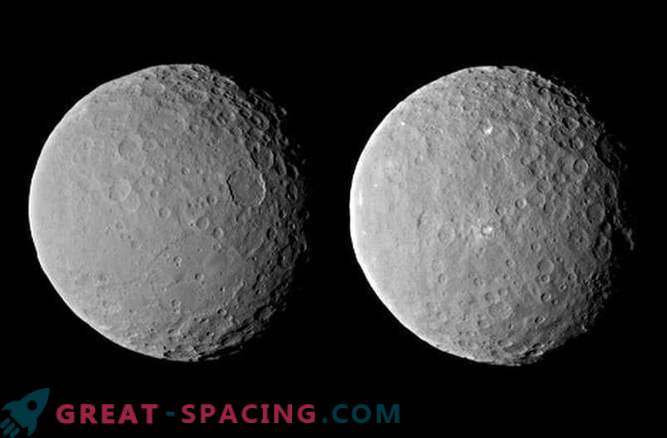
In fact, this image was taken back in February, when the Dawn spacecraft approached Ceres, but it is able to show the shape of a dwarf planet. Unlike other objects Asteroid Belts, Ceres is a dwarf planet. You can also see white spots on its surface, which are still puzzling scientists. While scientists viewed these images with great interest, the main purpose of these photographs is still optical stabilization.
Erosion craters
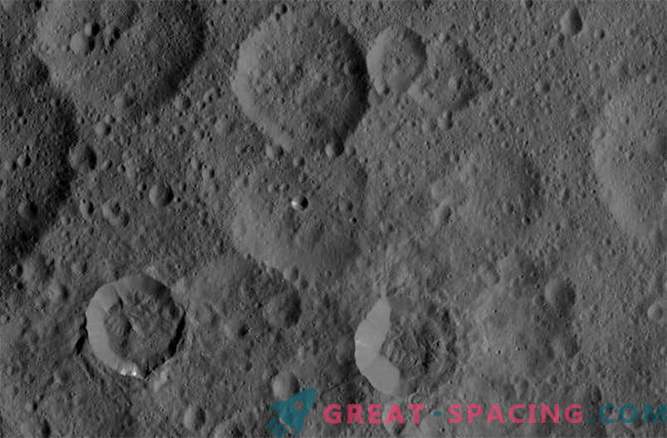
We can easily notice that Ceres has been subject to collisions with asteroids for a long time. In this image, we can see that the crater on the left has sharper edges than the crater on the right. This indicates a possible erosion effect.
This photo also shows that Ceres was subject to collisions with stones of various sizes, ranging from huge to the size of small pebbles or dust.
Craters close up

If you look at one of the craters, like the Dantų crater, which is about 77 miles (124 kilometers) wide, you can understand the geological history of Ceres. Small craters that are located inside the crater Dant D, formed after the formation of the main crater. The walls of the crater Dantų also show that the erosion process has already begun. In addition, we can observe white spots on the surface - probably ice is located under a thin layer of the surface.
Bright spots

This is one of the images that scientists use to get a better image of white spots on Ceres. Astronomers suggest that these white spots are formed from ice or other bright material.
"The Occator area is home to bright spots on Ceres," wrote NASA about this composite image.
Shadows and light
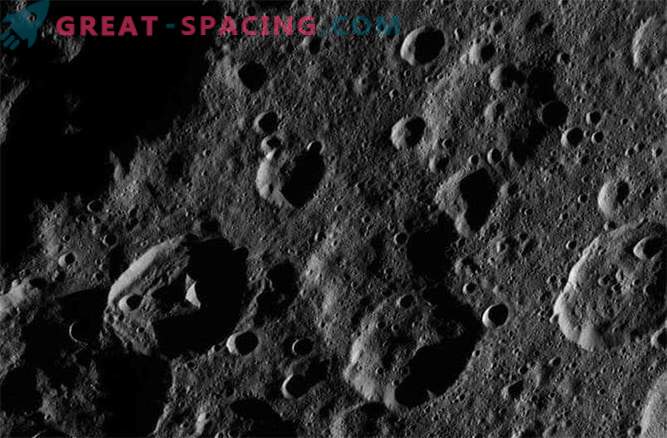
As observers of the Moon from the Earth note, when you look at an object in different light conditions, you can discover various details of the object. When the Sun is at its zenith above the moon, the sunlight may not show us some of the characteristics of the craters. At the same time, when the light falls at an acute angle, completely different details can open up to us.
It is through such images that we can see more details of the craters of Ceres.


